#shiro manga icons
Text


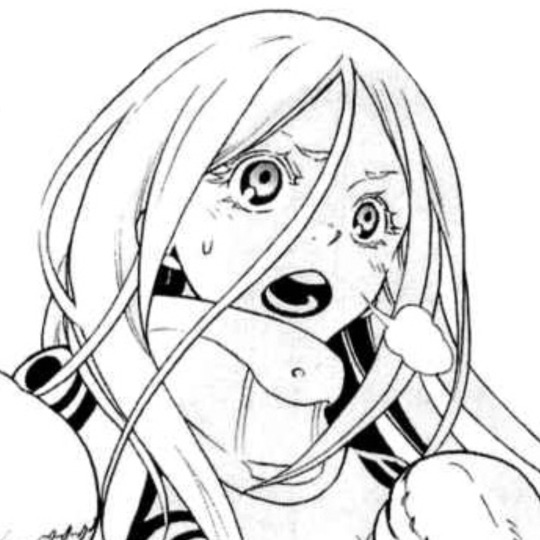

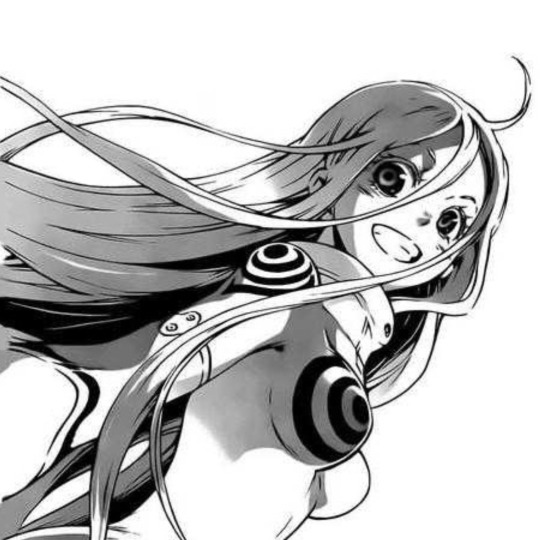
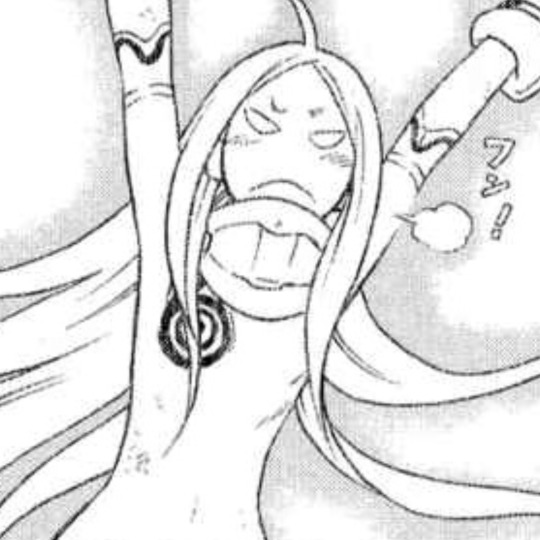

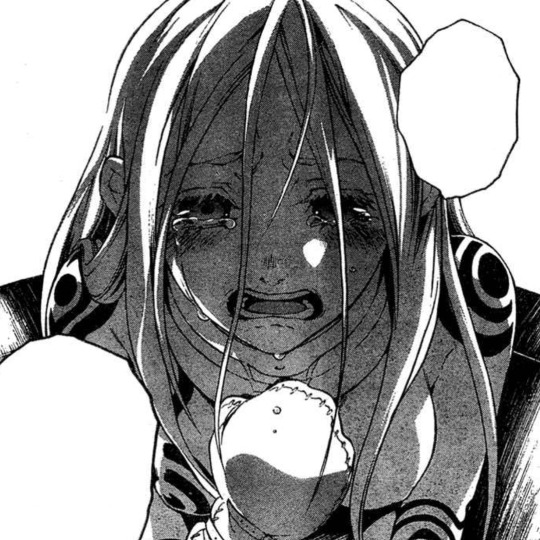
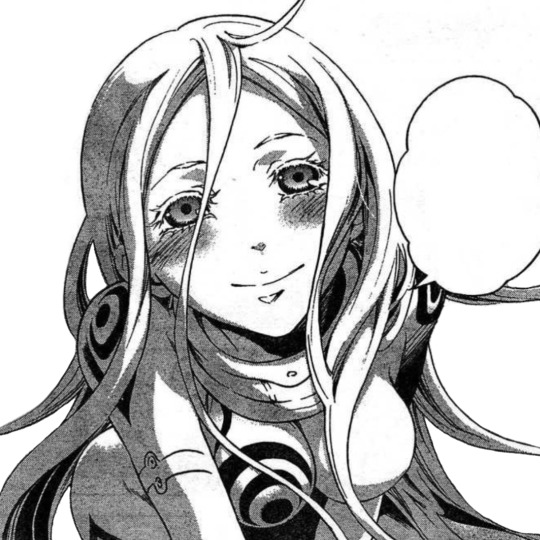

◌˚ヾ☆ ┃❛ { DEADMAN 〄 SHIRO } ❜┃ ଓ﹔๑˚₊
#deadman wonderland#deadman wonderland icons#deadman wonderland manga#shiro#shiro icons#shiro manga icons#manga#manga icons#anime#anime girl#anime icons#anime aesthetic#my edit#aesthetic#aesthetic icons
88 notes
·
View notes
Text
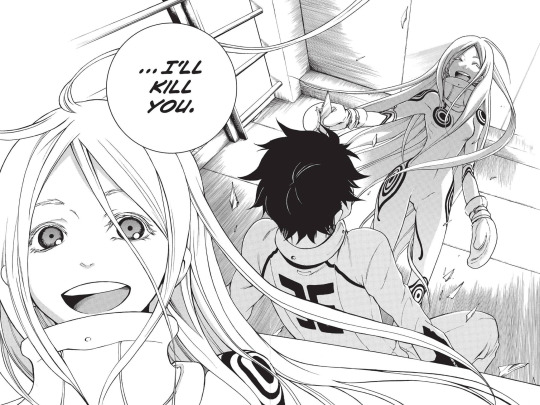
deadman wonderland
#manga panel#manga crop#manga edit#manga cap#mangacap#anime / manga#manga blog#manga and stuff#manga icons#deadman wonderland#deadman wonderland manga#deadman wonderland shiro#jinsei kataoka#animanga#dailymanga#mangadaily#mangacaps#manga caps#mangablog
797 notes
·
View notes
Text
Gakuen K Chapter 14 pt.1
IT'S BACK!
looks like tumblr won't let me put more than 30 images on one post now... don't remember it being like that before but uh, i'll be splitting this into two.
if you're looking for pt.2 it's linked here
thanks to cubealibrescans for the scans
hope you enjoy!




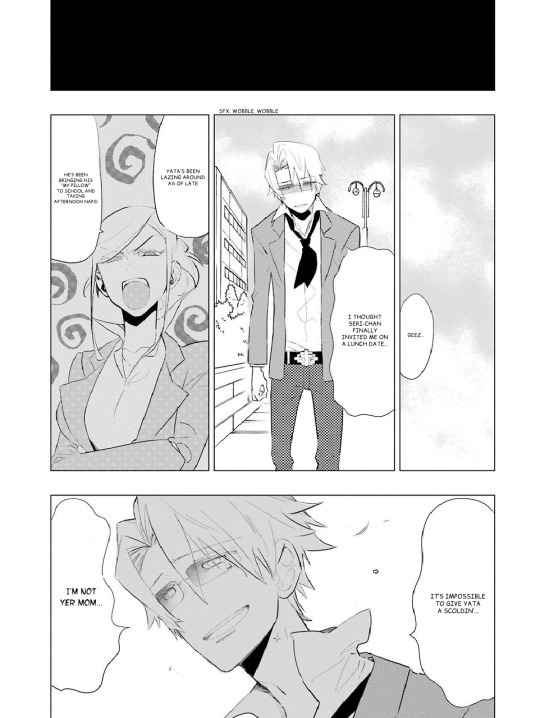
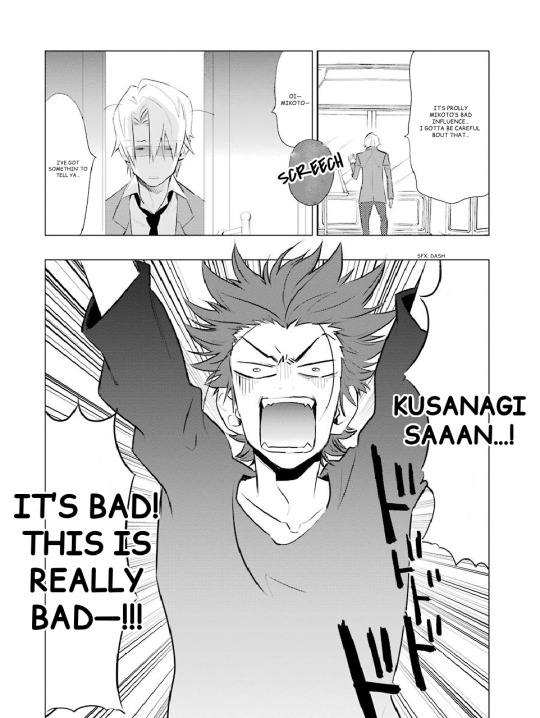




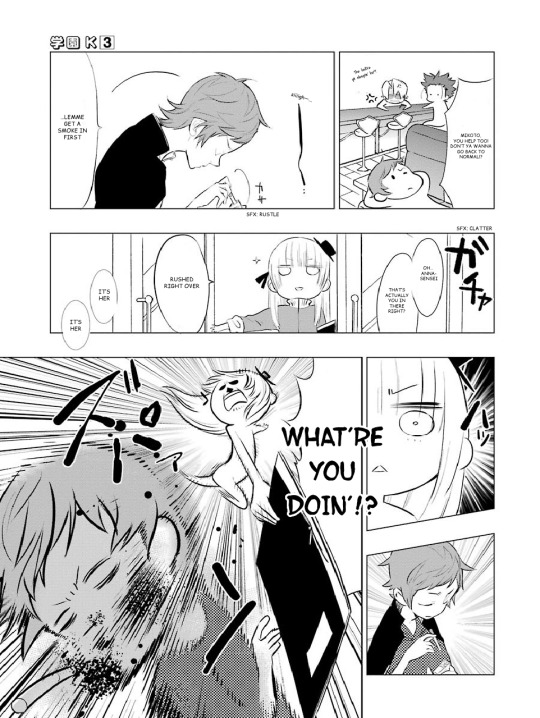





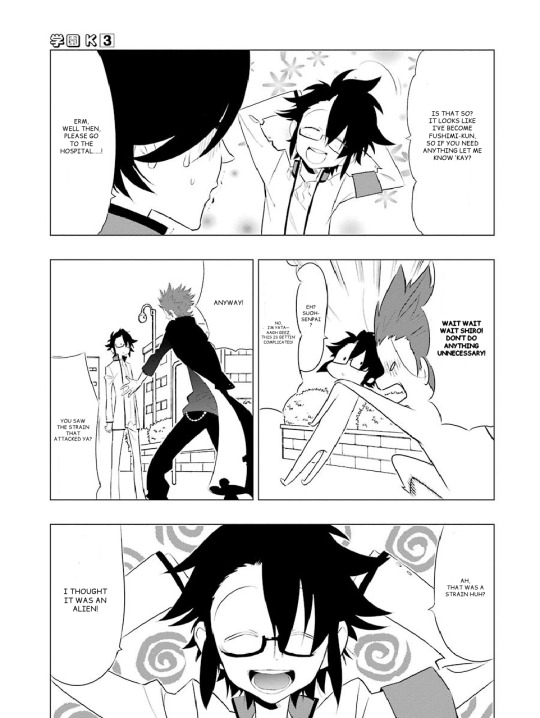



sorry about the split :(
pt.2 linked here
#shiro in saruhiko's body has given me some very awesome icon material and cursed content thank you gakuen k#k project#gakuen k#gakuen k manga#k project manga
31 notes
·
View notes
Text
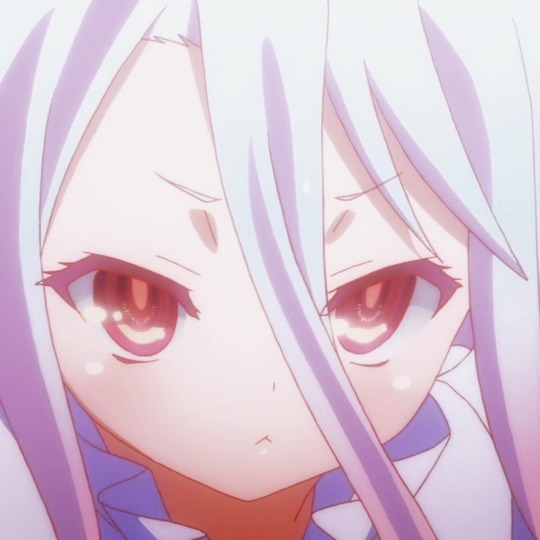

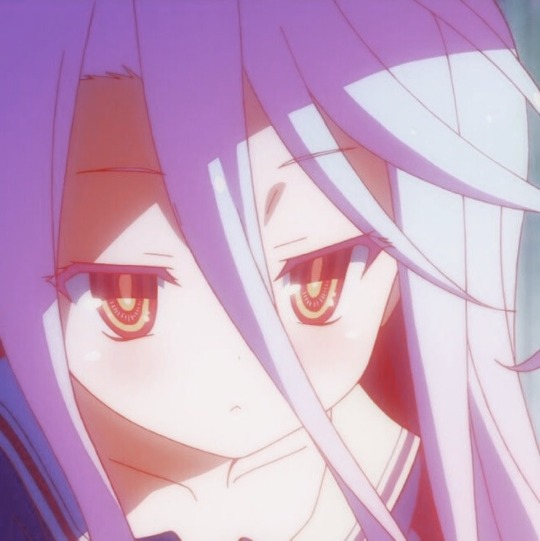


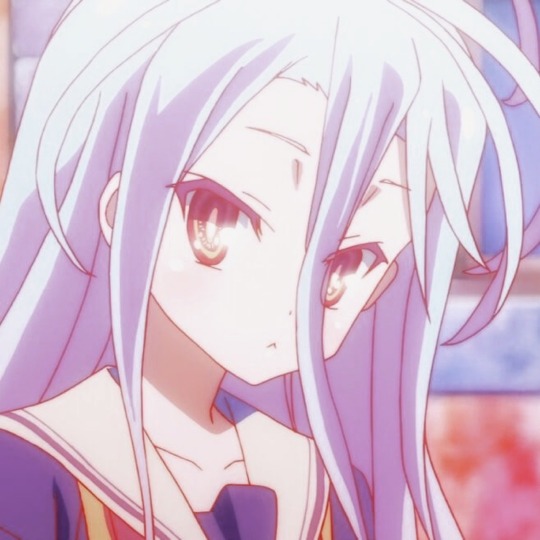



shiro from no game no life
#🎥 serexvu icon set#twitter layouts#twitter#twitter layout#anime icons#twitter themes#anime icon#twitter headers#manga#manga icon#anime#manga icons#shiro#no game no life
9 notes
·
View notes
Text





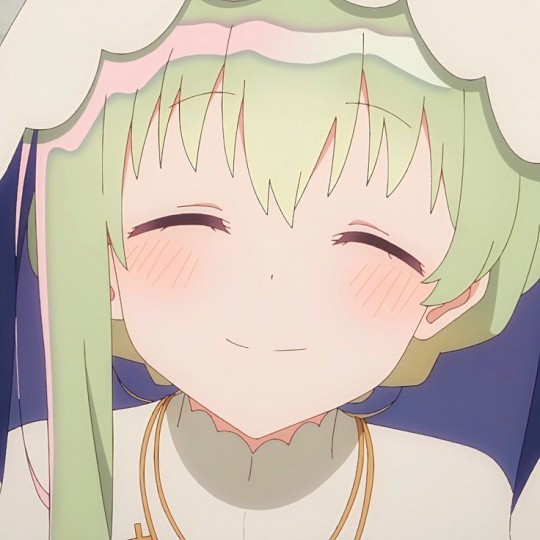
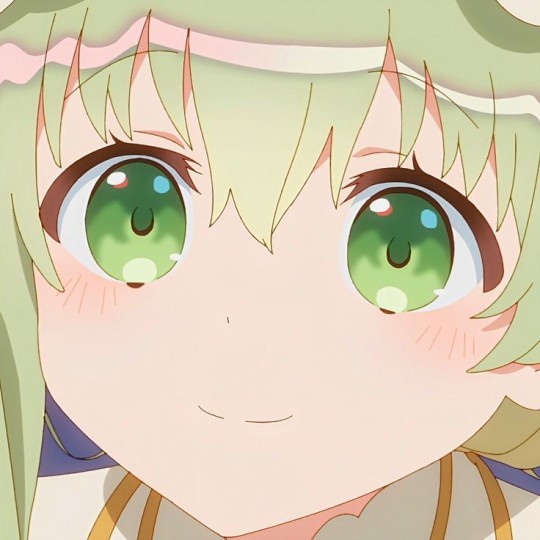

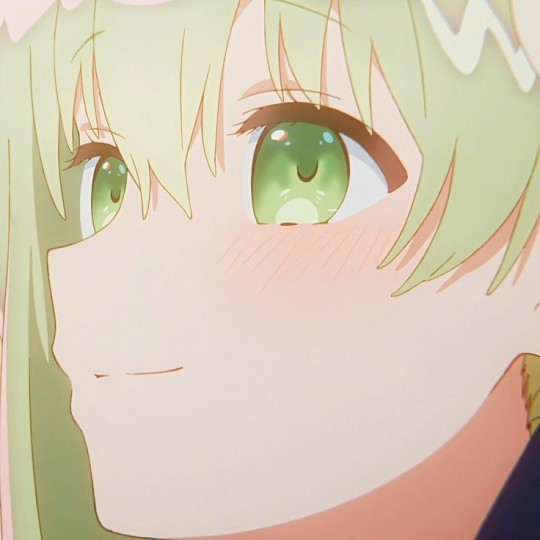
12 notes
·
View notes
Photo

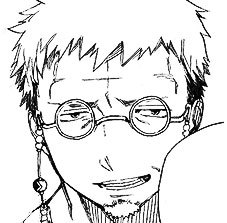




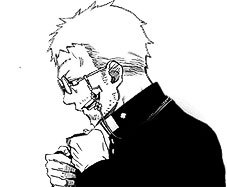


The many faces of Shiro Fujimoto
in my fleabag era
#in my fleabag era#got a thing for a priests apparently#shiro fujimoto#shiro#blue exorcist#Ao no Exorcist#manga#shiro pls just a chance#shiro Fujimoto icons#aoex
55 notes
·
View notes
Text
Tazze in ceramica create da me
Realizzabili con altre immagini
Per info link Facebook



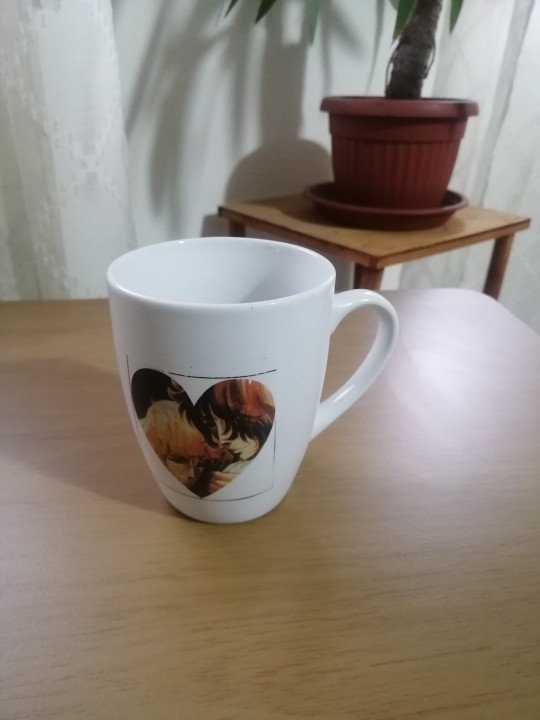


#candy candy#literature#sports anime#shoujo#sailor moon#90s anime#80s anime#anni 80#anime#anime art#anime icons#lady oscar#Oscar e André#manga series#manga#Mila e shiro#retro anime#anime memes#creamy
5 notes
·
View notes
Text
Shoujo Manga’s Golden Decade (Part 1)
Shoujo manga, comics for girls, played a pivotal role in shaping Japanese girls' culture, and its dynamic evolution mirrors the prevailing trends and aspirations of the era. For many, this genre peaked in the 1970s. But why?

Manga stands as one of Japan's primary cultural exports, deeply ingrained in the local culture and enjoyed by individuals of all ages and genders across various genres. Conventionally, manga is divided into two editorial segments: shonen (targeted at boys) and shoujo (targeted at girls). While shonen manga, propelled by hits like "Dragon Ball," "Slam Dunk," "Naruto," and "One Piece," has achieved global popularity, girls' comics, with their own international sensations such as "Sailor Moon," hold a crucial position in the market. The evolving landscape of girls' manga serves as a fascinating lens through which to observe the shifting fashionable aspirations and beauty ideals within Japanese society.
Shoujo manga has a rich history, dating back to the early 20th century. However, it truly gained recognition in its modern form in the late '50s and early '60s when prominent Japanese publishers introduced shoujo manga anthologies such as Kodansha's Nakayoshi and Shoujo Friend, as well as Shueisha's Ribon and Margaret. The acclaimed "godfather of manga," Osamu Tezuka, is often credited with creating the first modern shoujo, "The Princess Knight," in 1954, and the first shonen, "Astro Boy," in 1952.
A distinguishing feature of shoujo manga is that it is created by and for girls. But, in the '50s, this wasn't the case, and male artists dominated the shoujo field, which was considered an entryway to the manga business. By the 1960s, that would change as publishers recognized that women creators possessed a unique proficiency in crafting narratives centered around female experiences. Female manga-kas resonated with readers in a way that many male artists couldn't, marking a crucial shift in the landscape of shoujo manga.
The Volleyball Craze
A notable display of how shoujo could mirror societal trends unfolded in the '60s. In 1964, the Tokyo Olympics marked a new beginning for post-war Japan, and the female volleyball team, known as Toyo no Majou (the Oriental Witches), achieved stardom by clinching victory in the finals against the Soviet Republic. This triumph triggered a nationwide "volleyball boom," resonating particularly within the shoujo manga realm.
Shueisha's Ribon, historically the leader in the shoujo manga field, started publication in 1955. Still, the editorial house would only begin to make its series available in standalone tankobon format almost 15 years later through the now iconic Ribon Mascot Comics imprint. The first series to be made available by the imprint was Chikako Ide's "Viva Volleyball."
Simultaneously, over at Kodansha, Shoujo Friend was also eager to capitalize on the boom. Editors commissioned a title about the sport from illustrator Akira Mochizuki and novelist Shiro Jimbo. The final project, "Sign wa V," became a multimedia success, being quickly adapted into a live-action TV drama that achieved very high ratings.
While "Viva! Volleyball" and "Sign wa V" enjoyed success in their time, they did not etch themselves into the collective memory. The true shoujo sports manga blockbuster, a cross-generational classic universally known in Japan, is Chikako Urano's "Attack No. 1," serialized from 1968 to 1970 in Weekly Margaret.

It became the first shoujo manga title to surpass ten tankobon volumes (it had a total of 12 volumes), and it was forever immortalized thanks to its 1970 anime adaptation, which reached huge ratings on Japanese TV. Everything about "Attack No. 1" -- from the original manga to the cartoon adaptation to the anime's theme song, which sold over 700k copies as a single -- was a success.
The story of a high school girl trying to become the best player in her school, in Japan, and, eventually, in the world became a phenomenon setting the stage for the '70s "golden era of shoujo."
The Shoujo Lost Years
Until the '70s, manga carried the stigma of being a guilty pleasure, often viewed as a "poison" meant to dumb down young readers. Despite a few discerning individuals recognizing the medium's potential, manga critics, enthusiasts, and tastemakers — predominantly men — largely disregarded female-centric comics. Shoujo manga, despite its immense popularity, faced the harshest criticism.
Because society and critics downplayed shoujo, influential shoujo manga-kas from the '50s and '60s, such as Hideko Mizuno, do not enjoy the same level of recognition as their shonen counterparts from that era.

Hideko Mizuno and a page of one of her most celebrated works, "Fire."
Mizuno was one of the first women to create manga, worked as an assistant to Osamu Tezuka, and was behind several massive hits that had a significant impact on women in the '50s, '60s, and '70s. In fact, the most iconic shoujo manga-kas from the '70s golden period directly mention her as an influence. She fought to include romance -- now the essential element in girls' manga -- in her works back when such topics were deemed inappropriate by male editors.
Mizuno's repertoire was vast: she wrote mangas about little girls and their poneys, magic adventures, and romcoms based on Audrey Hepburn's movies, and she drew the first sex scene in a shoujo manga. The manga in question was "Fire," a teen-targeted manga featuring a rebellious American rocker, which broke new ground by having a male character as its focal point. Alongside other notable female artists from the '60s, Mizuno laid the groundwork for the '70s shoujo explosion, during which girls' comics took center stage.

In 1960's "Hoshi no Tategoto" (left,) Hideko Mizuno created the first shoujo love story. Serialized in Weekly Margaret between 1964 and 65, "Shiroi Troika," set during the Russian Revolution, was the first historical shoujo manga.
A contributing factor to this "golden period" was the emergence of several shoujo mangas as unstoppable hits, selling millions of copies and becoming cultural phenomena. These titles, considered masterpieces, continue to be read and known by multiple generations.
The BeruBara Boom
"Attack No. 1"'s success spread far and wide, forcing Japanese society to take note of the potential of the shoujo segment. Right after this historic success, Shueisha's Weekly Margaret hit the jackpot once again with another epoch-defining manga hit, Ryoko Ikeda's "The Rose of Versailles," which debuted in 1972. Set in the years preceding and during the French Revolution, it weaved together historical figures like Marie Antoinette and fictional ones, like the iconic Lady Oscar, a handsome noblewoman raised as a boy to succeed her father as the commander of the Royal Guard at the Palace of Versailles.

The first volume of the original comic had Marie Antoinette on the cover as Margaret's editors believed she'd be the favorite character. However, the androgynous Lady Oscar turned into a fan fave and the absolute star of the series, which is reflected on the cover of most rereleases since then, including the 2013 bunko version seen above.
When talking about shoujo manga classics from the '70s recognized by literally everyone in Japan, "Rose of Versailles" is probably the first name that comes to mind. It was a hit that really defined the era and impacted the country as a whole. While Marie Antoinette is seen around the world as a tragic, out-of-touch figure, in Japan, many women and girls see her as an aspirational historical fashion icon. While Sofia Coppola's 2006 film "Marie Antoinette" solidified this among younger generations, it was Ikeda's gentle portrait that made her a character loved by so many across all age groups.
When conceptualizing the story, Ikeda was heavily inspired by Stefan Zweig's "Marie Antoinette: The Portrait of an Average Woman," which she read while in high school. Once in college, in the late '60s, she, like millions of others, was heavily involved with the Marxist student movements. These references led to a historical romance that touched on heavy and revolutionary themes, which was atypical for a shoujo manga, a segment that, back then, was primarily catered to elementary school-aged girls.
Because of its unorthodox concept, Margaret's editors were unsure about the series. But right from the start, "BeruBara" (derived from the original Japanese title, "Berusaiyu no Bara"), serialized between 1972 and 1973, was an explosive hit, quickly turning into Weekly Margaret's most popular series. It was compiled in 10 tankobon volumes published, which sold tens of millions of copies.
In 1974, after the original manga had finished its serialization, Takarazuka Revue, an all-female theatrical troupe, announced a stage adaptation of the story.
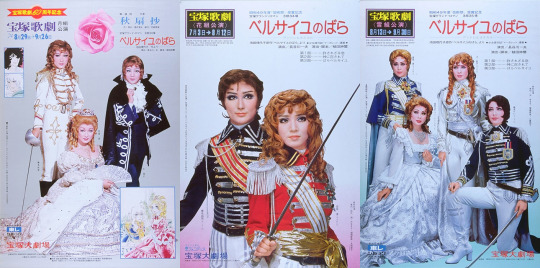
Posters of the first three Takarazuka adaptations, from between 1974 and 1975. Since then, the Revue has adapted the manga 11 times, with a new run scheduled for 2024.
The Revue was established in 1913 by the owner of Kansai's leading railway company, Hankyu, to boost tourism to the city of Takarazuka, his line's last stop. It was a huge success, and soon, the group had its own luxurious theater as well as its very exclusive academy where young ladies underwent an arduous audition process to become Takaraziennes. In 1934, a second Takarazuka theater opened in Tokyo.
However, in the early 1970s, Takarazuka faced stagnation, with declining ticket sales attributed to the growing popularity of alternative entertainment forms such as cinema and television.
In 1973, Shinji Ueda, who had risen through the Takarazuka ranks as a director, made his debut as a playwriter in the company with a musical based on ancient Japanese history. While thinking about his next project, he decided to check out a manga popular with some Takarazuka fans, "Rose of Versailles," and he quickly realized it was the perfect theme for an adaptation. Lady Oscar, who had lady-like features but was also as handsome as a man, was the embodiment of the male role-playing Takaraziennes. Ueda reached out to Ryoko Ikeda, who, as an admirer of the troupe, quickly granted the rights.
But Ikeda and Ueda's excitement wasn't shared by many. Most of the Takarazuka team were skeptical about a play inspired by something as vulgar as a manga. Fans of the original were also highly protective of its characters and entirely against a live adaptation.
Amid this climate of distrust, the play opened at the end of August 1974 at the Takarazuka Grand Theater. The reaction after the first night was extremely positive. Soon, Takarazuka's "Rose of Versailles" was the hottest ticket in all of Japan, with the press breathlessly covering the "BeruBara boom" that led thousands of people to stand hours in line to get tickets to the coveted performances in Kansai and Tokyo. Ikeda herself was shocked by the media phenomenon when she returned from an overseas trip and had hundreds of reporters awaiting her at the airport.
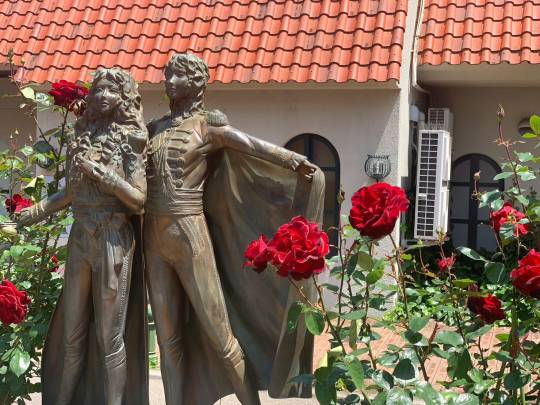
A statue of Lady Oscar and Andre surrounded by rose bushes sits outside the Takarazuka Grand Theater in Hyogo, Japan.
The "BeruBara" phenomenon single-handedly reversed Takarazuka's fortunes, leading to record-shattering ticket sales for the company. The Takarazuka Academy, which had seen declining applicants, suddenly became highly sought-after again, originating the saying "Todai in the East, Takarazuka in the West," comparing it to Tokyo University, the most prestigious university in Japan. The phrase underscored the desirability and prestige associated with a position at the troupe.
Ultimately, the success of "The Rose of Versailles" propelled Takarazuka back to the pinnacle of the entertainment industry, a position it maintains to this day. The brand continues to hold great esteem among women of all ages in Japan, with Takarazuka's stage adaptations, derived from Broadway musicals, movies, novels, and shoujo manga, consistently selling out. Notably, various adaptations of "BeruBara" have collectively sold over 5 million tickets since 1974.
Following the manga and Takarazuka adaptation's explosive success, the anime debuted in 1979. While the anime received acclaim, Ikeda herself was not entirely satisfied, mainly due to the treatment of her favorite character, Andre, who played a significant role in the manga but had a minor presence in the animated version, which focused almost entirely on the manga's most popular character, Lady Oscar.

In 2013, celebrating Margaret's 50th anniversary, new special chapters of "BeruBara" were published. The first new story in 40 years resulted in Margaret magazine selling out across the country.
"BeruBara" remains a prominent franchise in Japan, spawning numerous licensed products, sequels, and spin-offs. Ryoko Ikeda, known for other successful series, continues to garner widespread respect and media attention. However, while almost everything related to "The Rose of Versailles" turned into a hit, there was an exception.
In March 1979, a few months before the anime premiere, a live-action film adaptation debuted with great fanfare. Fittingly for such a hot property, the movie was one of the most ambitious productions in Japanese cinema, with a substantial 1 billion yen budget.
The Palace of Versailles granted permission to shoot in its interior. The film was filmed in English, with a European cast. The project was helmed by France's hottest movie director, Jacques Demy. Demy wasn't respected only in the West but also in Japan, where his two most important films, "The Umbrellas of Cherbourg" (1964) and "The Young Girls of Rochefort (1967)," were also hits. In fact, to this day, both flicks remain popular among trend-conscious Japanese as examples of stylish oshare movies that fully capture aspirational girls' culture (alongside, among others, Sofia Coppola's "Marie Antoinette"). Demy, the mind behind dreamy, girly movies, seemed like the perfect choice to turn this blockbuster shoujo classic into a live-action film.
The movie had the backing of three gigantic domestic corporations: Toho, the leading Japanese movie distributor; Nihon Terebi (NTV), one of the main TV stations; and cosmetic giant Shiseido. NTV and Shiseido made sure the movie had one of the most extensive marketing campaigns Japan had ever witnessed. The TV station aired specials and segments on this grand production. Meanwhile, Shiseido made the star of the movie -- British actress Catriona McCall, who played Oscar -- the face of its spring campaign, promoting its new Red Rose lipstick. Catriona was plastered on billboards across the country, made media and department store appearances, and starred in luxurious TV spots.

On the left, Lady Oscar and Marie Antoinette adorn the cover of Margaret in 2016, over 40 years after the end of the original serialization. On the right, Oscar models Dolce & Gabanna new collection for high-end fashion magazine Spur in 2014, celebrating 40 years of the conclusion of the original manga.
Back then, Kanebo, the second biggest local cosmetic company, was in fierce competition with Shiseido. TV ads from both companies had a tremendous impact, propelling singles to the top of the charts, and there was a battle on which commercial would feature the biggest hit. But, in the spring of 79, the focus of the fight changed. As a response to the Catriona "Rose of Versailles" campaign, Kanebo also hired a British beauty, actress Olivia Hussey, and launched a "Super Rose lipstick" with the tagline "You are more beautiful than a rose." The cosmetics war was another proof of the chokehold "The Rose of Versailles" had in the decade.
But, when the movie finally premiered, it was a flop. Critics hated it. Japanese fans thought the adaptation was weak and lacked impact. Catriona, in particular, was very criticized for not conveying Oscar's androgynous charm, which perfectly balanced masculinity and femininity. With the well-received anime premiering just a few months later, the expensive movie adaptation ended up being outshined and forgotten. It became only a costly footnote in its history.
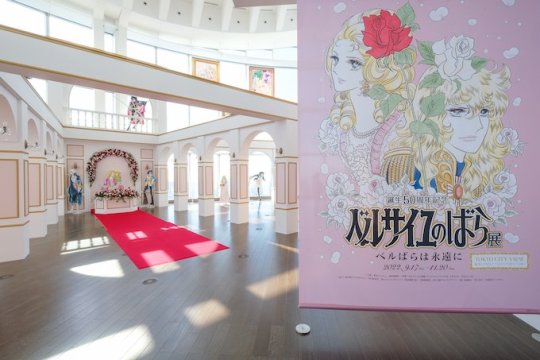
An exhibition in Tokyo celebrates 50 years of BeruBara in 2022.
(It's worth noting that Kanebo clearly won the CM war. The "You Are More Beautiful than a Rose" song they commissioned from singer Akira Fuse became a considerable hit).
Movie aside, "The Rose of Versailles" is one of Japan's most beloved comics. From its debut in 1971 to its film and anime adaptation in 1979, it remained front and center in the country's mind throughout the whole decade. Its impact was felt in different fields, from the cosmetic business to the publishing business, from live theater to TV. It also forever changed how shoujo manga was perceived and remains one of the country's most beloved properties.
Ace-Scoring Manga
The 1970s marked a turning point for shoujo manga, as it began to gain recognition beyond its traditional audience, propelled not just by critical acclaim but by commercial success. The era witnessed the emergence of several blockbusters that captured the public's imagination. Notable among them were Yoko Shoji's "Seito Shokun," a tale centered on the daily exploits of a mischievous high-schooler, and Waki Yamato's "Haikara-san ga Toru," a love story set in the Meiji period featuring a tomboy with a lady-like demeanor. These manga were significant hits during their publication in Shoujo Friends, becoming best-selling titles.
Some shoujo classics from the '70s are still in publication today, appealing to a diverse readership spanning multiple generations. Suzue Michi's "Glass Mask," serialized in Hana to Yume since 1976, remains a cultural phenomenon with 49 tankobon volumes, over 55 million copies sold, an anime adaptation, a live-action drama, and a stage play. Similarly, Chieko Hosokawa's "Crest of the Royal Family," chronicling the adventures of a young American girl transported to ancient Egypt, has been a consistent presence in Princess magazine since 1976, boasting 69 volumes and over 45 million copies sold to date.
But, when talking about definitive shoujo classics from the '70s, titles that were historical successes, influenced everything going forward, and are known by everyone, three titles come to mind. We already explored one of these, "The Rose of Versailles." One of the other three is "Ace wo Nerae."

Following the monumental success of "Attack No. 1," the prospects of another shoujo sports manga achieving similar heights of popularity seemed improbable. However, Weekly Margaret defied expectations once more in 1973 with the release of Suzumika Yamamoto's "Ace wo Nerae" ("Aim for the Ace"), a compelling narrative focused on tennis that swiftly captured the nation's attention.
Japan and tennis already had some prior history. The first Japanese Olympic medalist was a tennis player, Ichy Kumagae, in 1920. Emperor Akihito met his commoner wife, Michiko, at a tennis match, and they initially bonded over their love for the sport. But, in the 70s, the country was taken over by an unprecedented tennis boom. At high schools across the nation, tennis became the most popular after-school activity. Fashion magazines like JJ and Popeye dedicated pages and pages to "tennis fashion." At the same time, trendy young adults decked in clothes from sports brands populated Shibuya and other stylish districts in Tokyo.
There were several contributors to the tennis boom. But the remarkable success of "Ace wo Nerae," which first conquered girls before dominating the nation, played a part in it.
The manga follows the journey of Hiromi Oka, a high school student initially plagued by insecurities but propelled into the world of tennis through the encouragement of her coach. "Ace wo Nerae" portrays her growth from a hesitant newcomer to a world-class tennis player, navigating challenges and discovering hidden potential along the way.

From left to right: Madame Butterfly, lead character Hiromi Oka and coach Jin Murakata as depicted in the anime. Madame Butterfly, a rich wealthy student who was gentle and a world-class tennis player, is a fan favorite character.
In 1973, "Ace wo Nerae" was adapted into an anime. Despite initial modest ratings, the anime gained popularity through reruns. Encouraged by this, NTV decided to remake the cartoon. The second adaptation, which debuted in 1978, was an immediate hit. Concurrently, Weekly Margaret revived the manga series, which, after being first finalized in 1975, ran again from 1978 to 1980, spanning a total of 18 volumes.
Since "Ace wo Nerae," several hit mangas focused on tennis -- both shoujo and shonen -- were published. But, thanks to the success of its anime and the intragenerational support for the manga, the original work by Suzumika Yamamoto is still considered one of the defining and most beloved works about the sport. Its role in propelling tennis culture as part of the oshare youth culture of the '70s also defines its impact.
Japan Wants Candy
Following the monumental multimedia success of "The Rose of Versailles" and "Ace wo Nerae," the third shoujo sensation of the '70s is "Candy Candy."

Initially published in Nakayoshi, the story started taking shape when editors at the magazine sought a work of literary excellence akin to beloved classics popular among girls, like "Heidi" and "Anne of Green Gables." They enlisted Keiko Nagita, writing under the pen name Kyoko Mizuki, and paired her with one of the magazine's most famous artists, Yumiko Igarashi. The collaborative effort resulted in the creation of "Candy Candy," centered around an American, blond, blue-eyed orphan named Candice "Candy" White Ardlay.
"Candy Candy" epitomized various shoujo directions prevalent in the '70s. The protagonist, a white girl with lustrous blonde hair, embodied the fascination with Western culture during a time when Japanese youth held a keen interest in Europe and the United States. The manga's narrative style, characterized by its dramatic tone and intricate plot twists, also aligned with the prevalent storytelling preferences of the era.
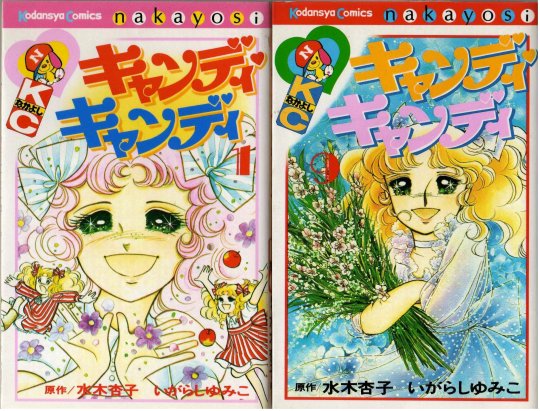
Candy Candy was such a resounding success that it became the first manga to achieve an initial print run of over 1 million copies of one of its paperback compilations.
Debuting in 1975, "Candy Candy" swiftly captured the hearts of Nakayoshi's readers, leading to unprecedented success. The subsequent anime adaptation by Toei in the following year propelled the franchise into the realm of a cultural phenomenon, sending manga tankobon sales skyrocketing. The seventh volume of the "Candy Candy" compiled paperback reportedly became the first Japanese manga to achieve an initial print run of over 1 million copies. Additionally, Nakayoshi's sales surged, surpassing those of Shueisha's Ribon for the first (and only) time.
The adventures of young Candy were also licensing gold. With over 100 licensed products, the "Candy Candy" doll alone sold 2 million units, solidifying Bandai's position as Japan's premier toymaker, a status it continues to uphold to this day. The resounding success of "Candy Candy" forged a lasting alliance between Kodansha's Nakayoshi, Toei Animation, and toymaker Bandai, which led to the iconic "Sailor Moon" franchise in the 1990s.
While "Candy Candy" concluded its run in 1979, its appeal extended far beyond its original target demographic, captivating kids, teenagers, and adults alike, thus contributing significantly to the manga and anime's widespread acclaim and enduring popularity.
However, a protracted legal dispute between Igarashi and Nagita has prevented the commercialization of any "Candy Candy" related products since the late 1990s, including reprints of the manga and re-broadcasting of the anime. The lawsuit arose from Igarashi's unauthorized licensing of merchandise based on the franchise, falsely asserting sole ownership of the copyright. Although Igarashi was initially credited as the lead artist in Nakayoshi during the manga's publication, the court ultimately ruled in Nagita's favor, emphasizing that Igarashi's artistic foundation was built upon Nagita's written work.
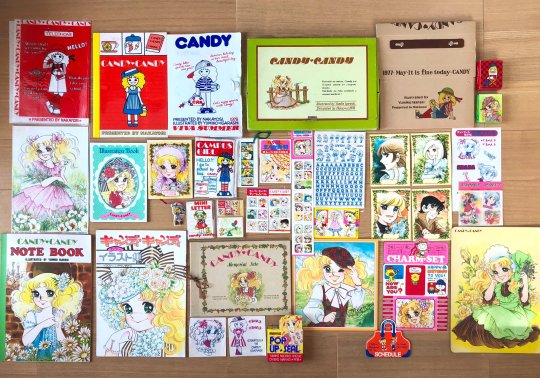
A collection of "Candy Candy" freebies offered by Nakayoshi magazine in the '70s. During the publication of the series, Nakayoshi would eclipse Ribon's sales for the one and only time in its history, (image credit)
Consequently, any commercial exploitation of Yumiko Igarashi's "Candy Candy" artwork necessitates the approval of both Igarashi and Nagita, a challenging prospect given the existing feud. Nagita, on the other hand, can profit from "Candy Candy" as long as she doesn't include any illustrations, which allowed her to release a book sequel in 2010. However, due to the dispute, one of the most beloved works in Japanese manga history is currently out of print. The lawsuit also blocks the anime from being aired or distributed. But, despite the almost two-decades-long media ban, "Candy Candy" remains widely known and beloved across Japan, a testament to its staying power.
While smash hits like "Candy Candy," "Ace wo Nerae," "Rose of Versailles," "Seito Shokun," "Hikara-san ga Tooru," and "Glass Mask," among others were key pieces into shoujo finally earning the respect it deserved, the rise of a revolutionary group of artists during the '70s was another critical element in shoujo's rise: the Year of 24 Group.
Part 2
#1970s japan#1970s#vintage shoujo#shoujo manga#lady oscar#rose of versailles#ace wo nerae#candy candy
44 notes
·
View notes
Text
And now, I just feel compelled to sing the praises of one of Kingdom Hearts' greatest heroes:
SHIRO. MOTHERFUCKING. AMANO!
The more time passes, the more amazed I am by this man. He's had a hero's journey IRL when it comes to his place in the franchise: jumping at the call but being inexperienced and screwing up, reaching his lowest point before rising, dealing with great adversity only to come out of it stronger than ever, and becoming a beloved hero to many who continues to do good.
KH1 was his first manga adaptation, and for the most part it's your by-the-numbers comic book adaptation of a story from a non-comic book medium, not especially good or especially bad. But Amano showed three weaknesses: he mischaracterized the KH-original characters (Sora, Kairi, Riku and Ansem all start out on point, but once Destiny Islands is destroyed this changes drastically: Sora turns into a spastic moron, Kairi into a bland bystander, Riku into an emotionless tool, and Ansem into an over-the-top eeeevil lunatic who actually gets himself killed without any contribution from Sora, Donald and Goofy!), he sucked at action scenes leading to many iconic battles from the game being straight-up left out altogether, and his gag manga inclinations caused him to turn scenes that should be serious / emotional into jokes.




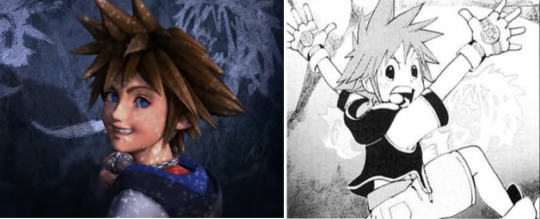
CoM was his aforementioned lowest point. All those flaws were not only still there, but worse, turning what was once a dark, mysterious and psychological story into an unfunny farce.

Disgraceful. For a good while, I actually disliked Shiro Amano due to this.
But then came the redemption: KH2. The Prologue section of this manga is masterfully done, possibly even better than the game's version. The pace is less sluggish, the events less irritatingly obtuse, and the humor actually works to the benefit of the story's seriousness - because so much of the goofy humor is between Roxas, Hayner, Pence and Olette, you build even more of an emotional connection to them and the tragedy of Roxas learning the truth about his life hits that much harder when it transpires. When Sora returns, Amano is briefly tempted by his old inclinations and kind of backslides, with the resulting trips to Hollow Bastion, Beast's Castle, Land of Dragons and Olympus Coliseum suffering as a result. They aren't quite as insulting as the CoM manga, but still bad. However, true to hero's journey form this period of temptation and backsliding passes and only reinforces Amano's commitment to improving and actually balancing his humor and adaptational changes with drama, emotional sincerity and faithfulness to the game. From Disney Castle on, he returns to quality output. There are still mistakes here and there, but on the whole the manga is an enjoyable one. From the characterization to the action scenes to the tonal balance, Amano had improved.
And then came the hiatus between its first half and second half, during which he worked on the 358/2 Days manga. Take what I said about KH2's Prologue, then apply it x10, and you get this manga, where the writing and pacing is improved from its game counterpart and the humor is rich, well-timed and actively feeds into the drama and tragedy of the story rather than detract from it. To make the contrast to how far he's come most apparent, remember how in the CoM manga where there's an omake short that makes a complete joke out of the Riku Replica, originally one of the story's most tragic characters? Well in this manga, we get an omake short about a Dusk, which starts out hilarious but then ends up being absolutely heart-breaking. It makes me legit sad over a goddman DUSK. Now that takes real talent!
What's also apparent with the Days and KH2 mangas is that Amano had come to shine in a way that Tetsuya Nomura absolutely does not: respect for his female leads. Kairi, Namine and Xion in these mangas aren't primarily sources of support for male characters or there to make male characters feel things above all else; they are their own distinct individuals with vivid personalities and clear character arcs. Even Olette shines brighter than in the games!
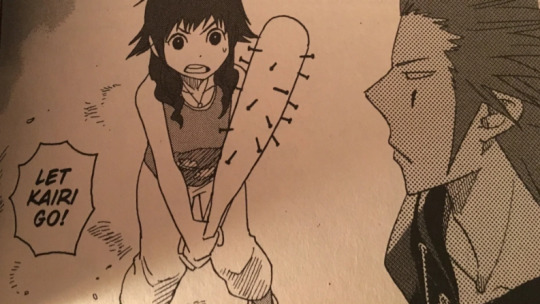
Once Amano made it back to the KH2 manga for its second half, he was firing on all cylinders. Again, not everything was perfect, but much like the game itself the narrative flaws were not enough to overshadow the many more narrative strengths. And when the manga finally concluded after so many years, Amano confirmed that it truly was the end. He would not be adapting other KH games. And given that the rest of the KH series never got better than where KH2 ended, this was absolutely for the best. I could very easily imagine the Olympian gods making a constellation in Amano's image, as he had become a true hero.
However, oh no! He got persuaded into adapting KH3 when it came out in 2019! This is going to ruin everything, right? WRONG! The KH3 manga has not only been a shining example of how far Shiro Amano has come, but also a masterclass in demonstrating how acutely aware of the game's problems he is and the lengths he is willing to go to fix them. For example...
- He opens the manga with a direct adaptation of the game's opening scene with the Boy in Black and Boy in White in front of the chess board followed by the FMV intro. By doing things in this strange way, Amano invites the possibility of this being an alternate, diverging timeline from the prior manga continuity so that its ending remains untouched should you desire it to be. Almost as if the Boy in Black and Boy in White reside in some higher plane of existence and the KH3 manga is the "game" that they're playing, so it's not to be taken too seriously.
- The whole opening that semi-recaps stuff leading into KH3 is played off as a joke, and given that the stuff in question was stupid (such as the Mark of Mastery exam through sleeping worlds and Sora failing his Mark of Mastery exam on bullshit grounds), this is appreciated.
- He actually makes Maleficent and Pete more competent; rather than have Maleficent dismiss Pete's idea to take Sora out while he's still weak, he has both of them agree that they needn't bother with Sora because his weakness will lead him to being destroyed by the Xehanorganization anyway. They can find the black box while their foes fight each other.
- 0.2 BBS is adapted after the Olympus visit in a way that also recaps the most important points of BBS and includes stronger characterization for Aqua, Terra and Ventus. Stupid things like Mickey losing his shirt are avoided, and there is actually clarification on how Mickey could not have gone into the Realm of Darkness to save Aqua earlier and all the time between KH1 and KH2 he was building up his strength to obtain the Power of Waking so that he could as he promised to, making him come off so much better than he did in the games.
-Coded is not referenced, ever.
- The "Roxas and Namine ceased to exist when they merged with Sora and Kairi" retcon is completely avoided, with the manga instead saying they do exist within them as was originally the case in KH2. Giving Roxas his own body is less correcting some injustice or "hurt" and more part because he's needed for the battle against Xehanort and part because Sora's just a nice guy like that, wanting to provide his friends with all the basic comforts.
- Xehanort's master plan retcon is also discarded! Here it's said that Ansem and Xemnas' plans remained their own, as they should be, and that since Master Xehanort's return he's embarked on "a new plan" once joined by his time-traveling younger self, who never mentions needing Ansem for his time-traveling which keeps things consistent with how KH2 depicted time travel as simply a magical phenomenon that didn't need complicated rules.
- Not only are Riku and Kairi way more in-character than they were in the game, but most shockingly Axel is too! He actually feels like Axel, character flaws and all, not dumbass Lea!
- Toy Box, Corona and Arendelle, while still filler, are all adapted faithfully, which is nice.
- Various alterations are made for the better: the Riku Replica stuff is kept to an incredibly bare minimum, Ansem the Wise first appears in the scene where he returns to Radiant Garden meaning him still being alive is more of a legit twist plus he never meets Aqua only for there to be no pay-off and the dumbass plotline with him and Xehanort's Heartless is left out, the "secret Keyblade legacy" stuff with Demyx, Luxord, Marluxia and Larxene is cut, the second Kairi and Axel scene is no more, and the big reconvening at Yen Sid's Tower scene and the fallout montage is massively reworked into something far better written and paced.
All this plus maintaining his balance of humor and sincerity, including using the former to support the latter, and even correcting previous flaws (holy shit, Marluxia, Larxene, Vexen...they're all completely in-character now!) If Amano keeps this momentum going and actually manages to make something good out of the notoriously disappointing finale in the Keyblade Graveyard, then he will officially have given us the best version of KH3's story in existence.
Tl;dr: nothing but respect for Shiro Amano, who is a better writer than Nomura will ever be.
#Disney#Square Enix#Kingdom Hearts#Shiro Amano#Opinion#Analysis#Truthbomb#Anti-Nomura#Anti-Tetsuya Nomura#This has been a PSA
14 notes
·
View notes
Text

𝟑-𝟓 𝐓𝐇𝐈𝐍𝐆𝐒 𝐘𝐎𝐔𝐑 𝐌𝐔𝐒𝐄 𝐂𝐀𝐍 𝐄𝐀𝐒𝐈𝐋𝐘 𝐁𝐄 𝐈𝐃𝐄𝐍𝐓𝐈𝐅𝐈𝐄𝐃 𝐁𝐘.


𝐂𝐎𝐋𝐎𝐑𝐒:
Green
Blue
Pink
Yellow

𝐒𝐂𝐄𝐍𝐓𝐒:
Lilies
Strawberries
Lavender
Lilacs
Warm Milk

𝐅𝐀𝐒𝐇𝐈𝐎𝐍:
Seifuku: This is probably the most iconic outfit that Kagome is seen in. Her middle school uniform is the main thing she wears throughout the entire series, both manga and anime. It's durable, cheap, and can stand repeated washings. It's green, white and red. She also has a high school seifuku that is mostly blue with a plaid pleated skirt, but she's only seen in that for a few chapters/episodes at the end.
Kosode no Hakama: This is what she is in mostly for RP. She wears it more post-series as she is a miko and now lives primarily in the Sengoku Jidai. It's also extremely comfortable and more durable than her seifuku, I'd say.
Kimono/Junihitoe: Special occasions call for special clothing. And those times when she isn't being a miko. She often wears kimono around the shiro that she and Inuyasha live in with their pups and the help they have. It's an elegant and simplistic way of dressing. She wears junihitoe on very special occasions, such as the rare as hell times when she and Inuyasha have to pose as daimyo and hime for outside visitors.
Modern Era: In the modern era, post-series, she often wears leather and pleather outfits. You can also find her occasionally in short skirts and semi-baggy tops. She rarely wears jeans.
jewelry: For these accessories--she doesn't have or use much. She always has one red ruby pendant earring in her left earlobe, but that's generally about it. She's not really one to dress up in sparkly bangles that often. Though she does have a necklace she got from her bff recently that she wears often now.

𝐎𝐁𝐉𝐄𝐂𝐓𝐒:
Bow & Arrows: Her in-hand weapon of choice for running around the Sengoku fighting youkai. You rarely see her away from home without it. She's got strong upper body muscles due to using it for so many years.
Yellow Backpack: Or her yellow monster that could eat the world, as I like to call it. She has this for during canon things, and she carries her text books, food, extra clothes, and First Aid in it. 'The backpack has been since upgraded to a denim knapsack for post series things, and she carries medicines, first aide and other little things in it.
Ruby Pendant Earring: This earring is a relic and reminder of a bygone era where the inu-tachi did more than time travel. It was part of a set of jewelry called the Gems of Kali, and the pieces when all together could open up a portal across the world. This earring was fused to her left earlobe in the use of the jewelry set, and she can no longer remove it as she could the rest. Therefore, it's always with her.

𝐁𝐎𝐃𝐘 𝐋𝐀𝐍𝐆𝐔𝐀𝐆𝐄:
She chews her lips a lot. This action usually shows either thought, reluctance, or nervousness.
Blushes often. She blushes all the time because she's often embarrassed or when she's being complimented.
She tilts her head frequently. When she does it, she's showing interest or curiosity.
She crosses her arms quite a bit. Usually, it indicates she's either annoyed, off-center, or just doesn't know what to do with her arms.
She also puts her hands on her hips. Often indicates when she's being stern-or funny.

𝐀𝐄𝐒𝐓𝐇𝐄𝐓𝐈𝐂𝐒:
Temple steps through Tori gates hidden deep along a mountain path with the greens of summer and beams of sunlight breaking through the foliage.
Plum and sakura blossoms blooming in the spring, coating the ground with their pink and white petals, which also float through the air on the currents of spring time zephyrs.
A girl in kosode no hakama standing in a field of flowers with a babbling brook firing practice arrows at a tree with her bow and arrows.
The deep woods as rain falls the droplets sparkling in the scant light from a cloud-covered moon.
A court lady sitting on the verandas outside of a shoji door, looking out over a serene garden with a koi pond and bridge as she sips tea calmly.

tagged by: @adversitybloomed (thanks dear~ Sorry it's so late. xD 💗💚)
tagging: @peculiarbeauty, @sparesovereign, @kamigakushi, @seachant, @loneinuyasha, @akarxuu And you, kind sirs and madams~
5 notes
·
View notes
Note
Thank you for answering my ask......if you don't mind me asking (again), who are your favorite romantic relationship's couples in books/ manga/ anime/movies/tv series (can be canon or non-canon)? Sorry if you've answered this question before......Thanks....
This one's harder because, as an unfeeling brick, I devote very few brain cells to the romantic lives of fictional characters. Where do I even begin?
That one scene in Fullmetal Alchemist where Winry sees Ed from behind and suddenly registers how broad his shoulders have become? Iconic.
GundamInfo has 08th MS Team up so I rewatched that for the first time in years, and I was like... Shiro and Aina’s romance doesn’t actually hold up. They don’t have a lot of screen time together and it kinda boils down to “he didn’t kill me even though I’m an enemy” and “yeah, cuz she’s hot.”
Battle couples are fun. Younger me was into Gohan/Videl (DBZ) and would’ve been happy with Domon/Allenby (G Gundam). Was quietly into Tatsuki/Ichigo (Bleach) and wanted her to get some powers to get in there and give Hollows the business.
I ship Chihaya with card games and that’s all I have to say about that.
No specific feelings about Sawako/Kazehaya (Kimi no Todoke) other than if that stupid boy does anything to hurt my daughter there will be consequences.
Oh, right, Zen and Shirayuki (Snow White with the Red Hair)!! They’re rational adults who trust and discuss their problems with each other, which is so great when 95% of shitty romance drama is failing to ask a simple question that would resolve everything.
9 notes
·
View notes
Text



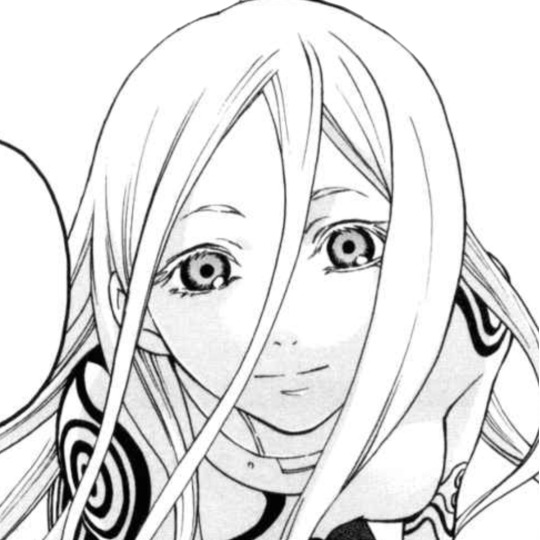
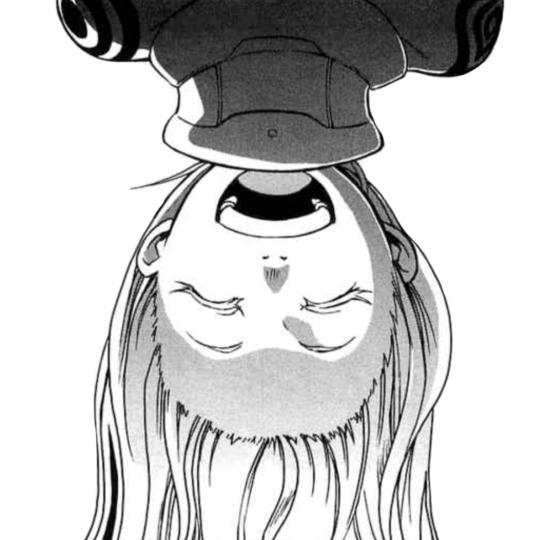


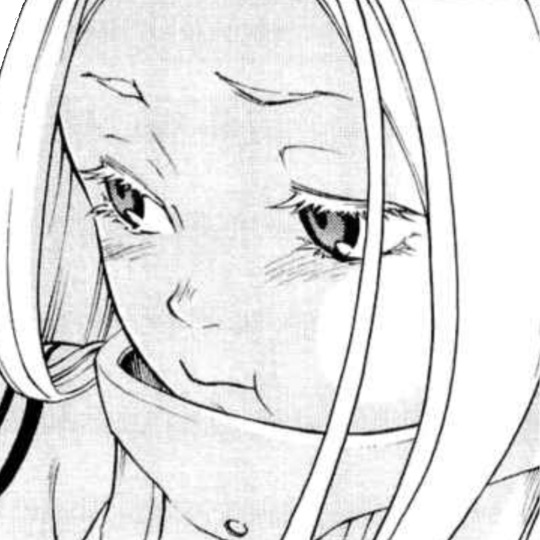

◌˚ヾ☆ ┃❛ { DEADMAN 〄 SHIRO } ❜┃ ଓ﹔๑˚₊
#deadman wonderland#deadman wonderland icons#deadman wonderland manga#shiro#shiro icons#shiro manga icons#manga#manga icons#anime#anime girl#anime icons#anime aesthetic#my edit#aesthetic#aesthetic icons
43 notes
·
View notes
Text

I posted 16,981 times in 2022
1,166 posts created (7%)
15,815 posts reblogged (93%)
Blogs I reblogged the most:
@sapphireswimming
@sockdooe
@yarrayora
@gentrychild
I tagged 13,661 of my posts in 2022
Only 20% of my posts had no tags
#voltron - 2,024 posts
#danny phantom - 1,421 posts
#bnha - 1,363 posts
#shance - 1,362 posts
#the owl house spoilers - 514 posts
#puppet liveblogs - 503 posts
#servamp - 493 posts
#bnha manga spoilers - 356 posts
#jujutsu kaisen - 278 posts
#puppet answers asks - 258 posts
Longest Tag: 140 characters
#about irl stuff. it's just. yeah this is me getting annoyed bc i'm the one awake at 1am feeding them and getting them to sleep for the night
My Top Posts in 2022:
#5
Shiro: why are there rumours that we’re both in a romantic relationship? Lance: *laying in Shiro’s lap letting him play with his hair* Lance: i have no idea.
Shiro would be more suspicious but he likes playing with Lance's hair too much to self-examine
69 notes - Posted June 18, 2022
#4
Why would AFO's bird be a vulture? Obviously he's a goose.
I enjoy the comedy of visually his bird looks like a Chuck Jones vulture, but also the chaos of him being a goose is...
I'm gonna have to field this one to @gentrychild
86 notes - Posted July 22, 2022
#3
Lance fell first but Shiro fell harder
Lance: *fell first, but in a gentle way that allows him to not come off as a simp*
Shiro: *fell slower, but is a simp*
89 notes - Posted June 10, 2022
#2
Love that toh never tries to explain whatever the fuck is going on with Hooty, like everything we get to know just raises more questions. Eda just created him. He can swallow people whole and regurgitate them, he can skin himself and puts his skin like clothes to dry, he can get out of the house and the whole thing is horrifying and leaves behind still beating organs, he has several shark like teeth through out his throat. Is any of this explained? No n i love it, i hope he keeps getting worse❤
absolutely nothing about Hooty is explained and nothing about him should be explained
247 notes - Posted May 24, 2022
My #1 post of 2022
Trying to figure out how to really explain it but god it’s so pathetic that it’s almost hilarious how hard the mcu is trying to make holland spidey into actual spidey when like. green goblin is just some homeless dude
they brought willem dafoe’s green goblin, his rich ceo of a huge science corporation, into the mcu and had him actually state that his company and the Osborne name just did not exist in the mcu. literally, he went looking for his company and found nothing, he went looking for his son and found nothing (he would’ve joined forces with his mcu counterpart if they existed but they canonically just Do Not Exist At All)
and this is meant to be The Big Villain of the movie! Peter Parker’s most famous foe and the mcu just could not make him into a rich ceo and like. Norman Osborne is Just Some Dude in the mcu. the one single villain that literally could not be reworked into “seems like they should be the villain of an iron man movie but go off I guess” and he’s Just Some Random Dude to Holland’s spidey and not the father of his very best friend or the ceo behind the company whose radioactive spider gave him spider powers
like, I know that Willem Dafoe is gonna knock his performance out the park when I finally watch the movie but goddamn this is so fucking pathetic that the mcu, that Mouse Corp, is so against having a villain be a rich dude that they obliterated one of marvel’s most iconic villains
and they want to take on Dr Victor Von Doom, who I’m gonna call will end up being some angry intern with vague beef that he got overlooked by Dr Reed Richards and make some weird iron man-like suit to make him on equal standing instead of the monarch of a country
718 notes - Posted January 13, 2022
Get your Tumblr 2022 Year in Review →
#tumblr2022#year in review#my 2022 tumblr year in review#your tumblr year in review#okay I'm laughing at how my top post is That One
3 notes
·
View notes
Text
i don’t use icons anymore but i have a lot left over that never got deleted. so, here’s some favorites from muses i no longer write on tumblr for various reasons and why i don’t write them anymore;

momochi ako --- too niche. nobody wrote with her really, which is a shame because she was pretty fun.

akutagawa ryuunosuke --- far too scary by far. i kind of miss him, though, and i considered bringing him back. in fact, his icons are in a special folder called “muses in limbo”, in which literally **only** his icons are stored.

ayatsuji yukito --- i’m not sure why he’s not here tbh. i really like him.

kumo baren --- too niche. did you know there are like 13 fics total tagged for the manga he and ako are from?

nikolai gogol --- i feel like his energy is a little too intense for the way i intend to run my blog, but then again i also have characters like graham.

abe no hirari --- too niche + bad associations. i don’t particularly enjoy the canon ship for him because my former writing partner with it made like botan and ghosted me, so i don’t want people asking me to write it.

ladd russo --- rated r for intense violence. like gogol, i felt like he didn’t suit the energy i wanted on my blog, but then again i actually kept claire.

edgar allan poe --- honestly i just fell out of the vibe.

edogawa ranpo --- i actually really liked writing ranpo, but i had good friends whose portrayals i prioritized and as a result nobody actually wrote with mine that much. i don’t mind it; since i tend to pick up a lot of muses i have a natural tendency to give priority to the people with more energy to focus on one specific muse.

roland fortis --- his fandom is super toxic. plus, bad associations, kind of?

ronny schiatto --- i didn’t think putting the all-powerful homunculus on my blog was conducive to interactions in which i did not have to godmod. claire is bad enough and i don’t need the only character in baccano! who could potentially land a legitimate hit on him as well.

shirogane kei --- actually my favorite on this list, but i can choose to either sell him or sell my baccano! muses really hard for interactions. because baccano! has more unique features and log horizon is an isekai with a couple standout problematic elements, it was easier to sell baccano! and remove shiroe entirely so he wouldn’t collect dust.

suehiro tetcho --- intensely bad associations, but i’ve considered bringing him back out of spite a few times. my past writing partner basically disowned me when i stopped wanting to write him as much when i got more into the witcher, and i think for my own health and the thought that i am a good person, i need to wait until adding him back doesn’t feel like a “fuck you” to that person.
1 note
·
View note
Text
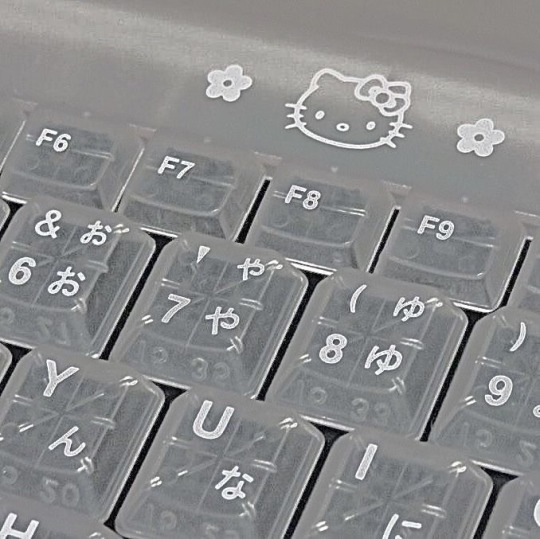








- `, [Lost in time] ꒱ ↷🖇
#anime moodboard#moodboard#black and white#manga moodboard#anime layouts#carrd theme#carrd moodboard#messy layouts#shiro#deadman wonderland#carrd inspo#icons manga#cute icons#carrd icons#juuzou suzuya#tokyo ghoul#moodboard white#grunge#soft grunge#punk aesthetic#kanae mbti#pink heart jam#white aesthetic#manga aesthetic#moodboard manga#twitter icons#random icons#messy moodboard
1K notes
·
View notes
Photo









It’s All Right ? ( 🧺☀️ ) I’m Very Sorry … •᷄ࡇ•᷅ . . . i ♡ you ? my 1 Thing ♬ ✧.˚ ٩(´ᵕ`๑)و 🧃🥪 : (ᗒᗩᗕ) !
#deadman wonderland#deadman wonderland icons#shiro#shiro icons#random icons#twitter icons#anime icons#icons#anime#manga#manga icons#anime profile pic#anime pfp#gif icons
282 notes
·
View notes